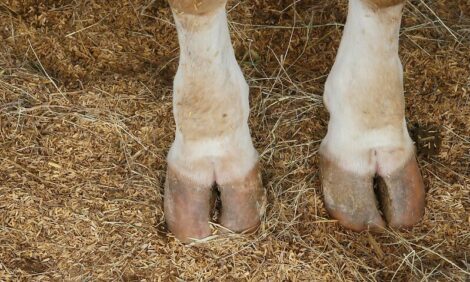



Genomics quietly improving sustainability US dairy production - CoBank
Milk production has climbed 19.2% since 2008US dairy producers are increasingly leveraging the power of genomic science to optimize the genetic potential of their herds for milk production, animal health and operational efficiency. Since genomic testing became commercially available in 2008, over 8 million US dairy animals have been genotyped for dozens of key genetic traits related to milk production and quality, feed efficiency, reproductive viability, and cow health, according to a recent CoBank report.
The investment has paid off handsomely for the overall industry in terms of production output and efficiency. While the US dairy herd is only 1% larger than it was in 2008, milk production has climbed by 19.2% and butterfat rose an impressive 32.2% from 2008 levels. Some of those gains have come from improved nutrition and cow comfort initiatives, but genomics has played a crucial role. Improvements in milk composition, including higher levels of protein and butterfat, are also directly attributable to the use of genomics to inform breeding decisions and mating selections.
According to a new report from CoBank’s Knowledge Exchange, an often-overlooked benefit of the dairy industry’s adoption of genomics is the impact it is having on sustainability. By optimizing genetics within their herds, dairy producers have successfully bred new generations of cows to produce more milk, butterfat and protein with fewer resources.
“The sustainability aspect of dairy genomics is largely an untold story,” said Corey Geiger, lead dairy economist for CoBank. “With each passing year, the US dairy industry needs fewer cows to produce the same amount of milk. That translates to less methane production, a smaller carbon footprint and less feed required for each unit of milk. Genomics is having a profound impact on dairy sustainability and the upside potential is enormous.”
Genomic science centers on the comparison of an individual animal’s DNA to the phenotypic performance of the entire population. The comparison allows producers to evaluate each animal within their herd for a wide variety of genetic traits and make informed breeding and retention decisions that advance overall herd genetics.
While several indexes track genetic progress, the Net Merit Index — or NM$ — is the most universally implemented index across all major dairy breeds as it combines over 40 traits into one measurement based on US dollars. The NM$ index, which serves as a proxy for genetic progress on sustainability, is formulated by the geneticists at the USDA and published by the Council on Dairy Cattle Breeding.
Data from the NM$ indicates that genomic selection has delivered $70 in additional value per cow per year. That calculation is based on the difference between the $13.50 in annual genetic improvement prior to the availability of genomics and the $83.33 annual genetic gain from 2010 to 2022. The financial incentive has fuelled a rapid increase in the adoption of genomics among dairy producers in the US and abroad.
“The exciting part of dairy genomics is that we’re really just scratching the surface and major advances are likely coming in the years ahead,” said Geiger. “For example, genomic science has the potential to identify new traits that will further reduce methane production and the carbon footprint of dairy operations.”
Toward that end, the CDCB is working with the Foundation for Food & Agriculture Research to collect data to further study the opportunities for methane and carbon reduction. In addition, the Greener Cattle Initiative and its research consortium have awarded $5 million to support research to mitigate enteric methane emissions.
“The ultimate goal is to collect the data needed to create a national genomic evaluation for methane emissions,” said Geiger. “When fuelled by the power of genomics, this work will open the next chapter in breeding more sustainable cows.”



